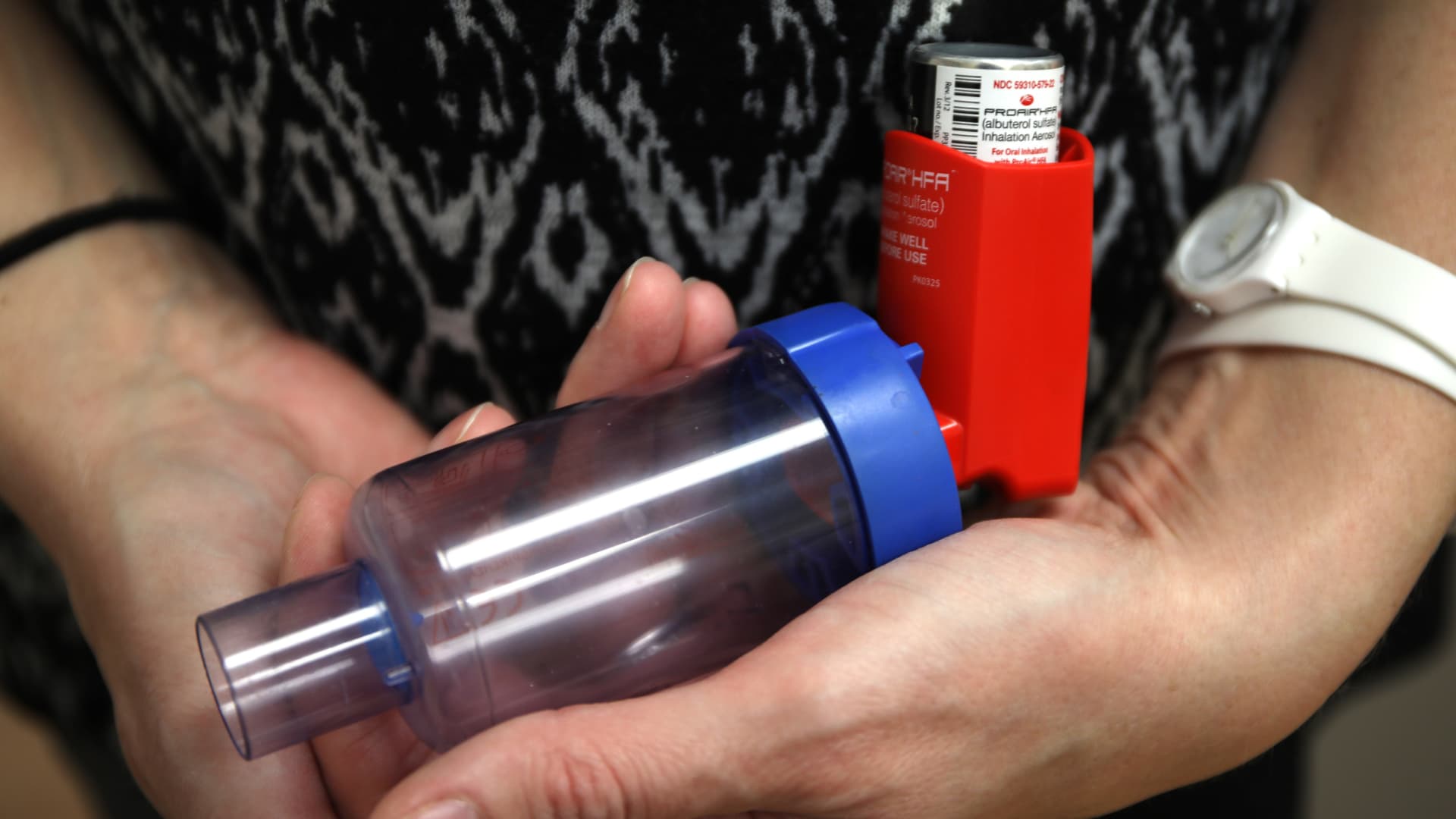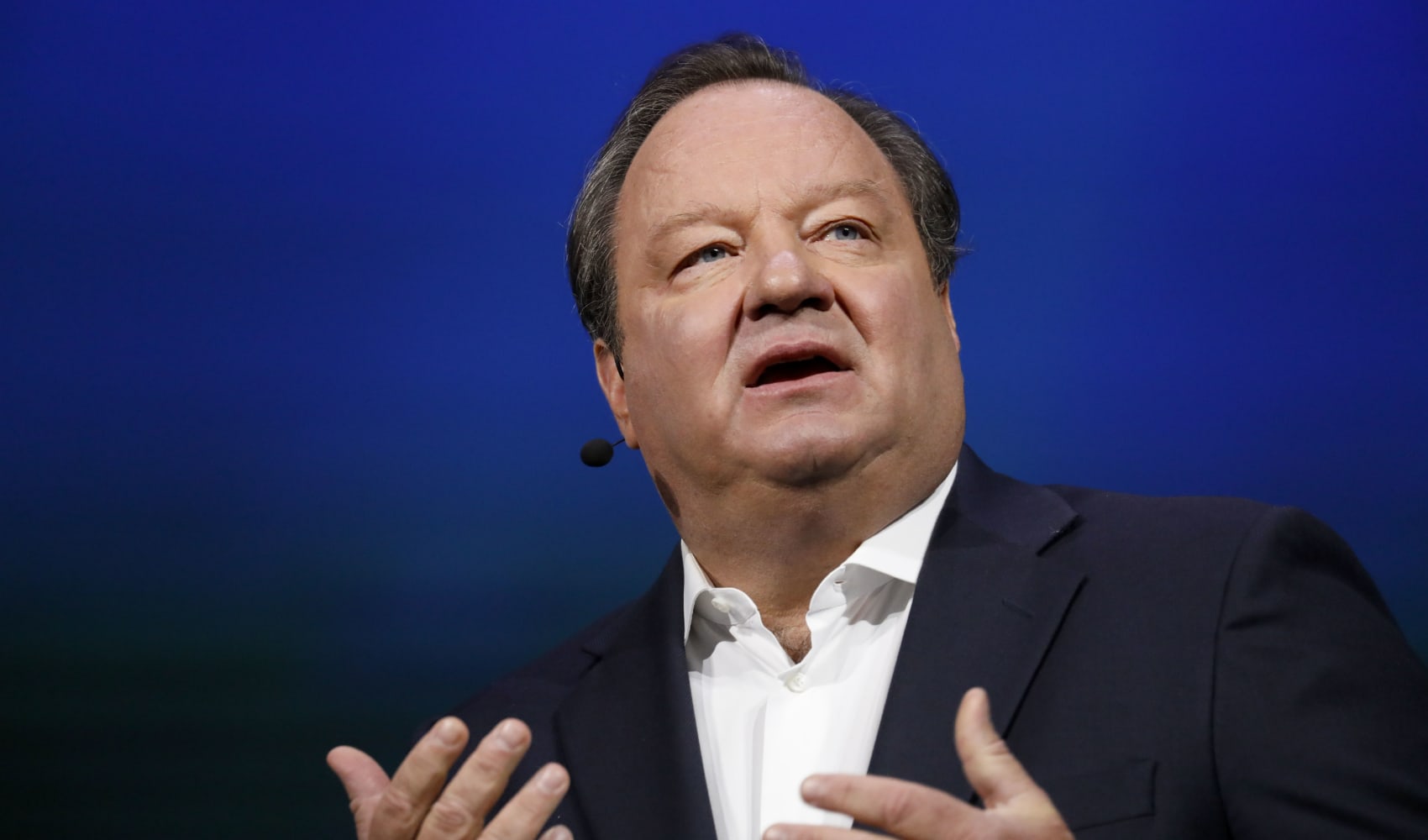
Think a friend or colleague should be getting this newsletter? Share this link with them to sign up.
Good afternoon! Inhalers will soon get a whole lot cheaper for some Americans.
Three of the world's largest inhaler makers have agreed to cap the out-of-pocket price of their inhaler products and similar inhaled medicines at $35 a month for certain U.S. patients.
British drugmaker GlaxoSmithKline announced its cost cap last week following similar moves by AstraZeneca and the privately held Boehringer Ingelheim.
Get San Diego local news, weather forecasts, sports and lifestyle stories to your inbox. Sign up for NBC San Diego newsletters.
But there's one holdout: Teva Pharmaceuticals, another major inhaler manufacturer, has not made a similar commitment.
The cost caps from the three other companies won't go into effect immediately. They also didn't come from out of nowhere.
In January, Sen. Bernie Sanders (I-Vt.) and other members of the Senate Committee on Health, Education, Labor, and Pensions launched an investigation into why all four companies charge more for inhalers in the U.S. than in other countries.
Money Report
It adds to the years of political scrutiny and public outrage that the broader pharmaceutical industry has faced over high health-care costs in the U.S. Last year, Eli Lilly, Novo Nordisk and Sanofi moved to slash the cost of certain insulin products for some U.S. patients following pressure from the same Senate panel.
So, who typically uses inhalers, and how much do they cost in the first place?
People with chronic lung conditions that affect their breathing, such as asthma or chronic obstructive pulmonary disorder, or COPD, most commonly use inhalers. They can use daily inhalers to prevent or manage their symptoms and fast-acting inhalers at times when their breathing worsens, like during an asthma attack.
An estimated 25 million Americans have asthma, while around 16 million suffer from COPD. Many of those patients rely on inhalers to help them breathe, and some end up having to ration those products due to price, the Senate HELP committee said in a release in January.
Here's what the panel says drugmakers have been charging for some of their inhaler products:
- Advair HFA from GSK: $319 in the U.S.; $26 in the U.K.
- Combivent Respimat from Boehringer Ingelheim: $489 in the U.S.; $7 in France
- Breztri Aerosphere from AstraZeneca: $645 in the U.S; $49 in the U.K.
- QVAR RediHaler from Teva Pharmaceuticals: $286 in the U.S.; $9 in Germany
In addition to the price differences, the panel argued that the companies extended monopolies on their products inappropriately.
The committee argued the drugmakers used tactics like obtaining additional patents close to the end of their period of market exclusivity, shifting patients to newer versions of inhalers with longer patent protection and entering into agreements with generic manufacturers to stave off cheaper competition. Generic inhalers can cost as little as $30.

Notably, GSK said it recently reduced the list price of Advair HFA by an average of 20% and a similar product, Advair Diskus, by an average of 50%.
GSK's new price cap applies to both of those products and the rest of its asthma and COPD inhaler portfolio. That includes the company's popular Trelegy Ellipta and other Ellipta inhaler products, among others.
The caps come after GSK discontinued the branded asthma inhalers Flovent HFA and Flovent Diskus at the beginning of January. The company replaced them with "authorized generic" versions of the inhaler, which are identical aside from branding.
The company's price ceiling will specifically benefit patients taking those medicines whose monthly costs currently exceed $35. It will go into effect on Jan. 1, 2025, GSK added in a release.
Meanwhile, AstraZeneca's price cap will apply to the company's entire range of inhaler products used to treat asthma and COPD. That includes Symbicort, Breztri Aerosphere, Bevespi Aerosphere and Airsupra.
The cap will apply to patients who are uninsured or underinsured and will go into effect on June 1.
That's the same day Boehringer Ingeleim's out-of-pocket cost cap on all of its inhaler products will take effect.
Boehringer Ingelheim's cap will apply for "the most vulnerable patients," including those who are uninsured or underinsured. The cap applies to its Atrovent HFA, Combivent Respimat and Spiriva products, among others.
Sanders applauded the three companies for announcing their cost caps.
"This will significantly cut costs for millions of Americans with asthma and COPD so that they will be able to afford the inhalers they need," he said in a release last week.
We'll be watching to see whether Teva announces its own cap.
Feel free to send any tips, suggestions, story ideas and data to Annika at annikakim.constantino@nbcuni.com.
Latest in health-care technology
Digital diabetes management tools increase health-care spending, fail to improve patient outcomes, report finds
Many digital diabetes management tools aren't all they're cracked up to be, a new report published by the Peterson Health Technology Institute (PHTI) found.
PHTI is a nonprofit that conducts independent evaluations of digital health solutions. For its first report since its founding last year, the institute explored whether tools from DarioHealth, Glooko, Omada, Perry Health, Teladoc's Livongo, Verily's Onduo, Vida and Virta make a meaningful difference for patients with Type 2 diabetes.
These companies all claim their digital diabetes tools help people monitor their blood glucose, and many offer additional information related to medications, diet and exercise.
The solutions that PHTI included in its report were typically created between five and 15 years ago, and they use an app or website to connect to a noncontinuous glucose monitor, which patients use to measure their blood sugar by pricking their fingers.
PHTI found that these digital diabetes management tools "do not deliver meaningful clinical benefits," the report said. For instance, the solutions typically only help patients log "small reductions" in HbAIc, which is a blood test that measures their average glucose level over a three-month period. Additionally, the tools' small benefits "will reduce over time," according to the report.
As a result, PHTI said these digital diabetes management methods increase net health-care spending for health plans, providers and self-insured employers.
"These tools are not replacing other care that people with diabetes are receiving," Caroline Pearson, executive director at PHTI, told CNBC in an interview. "Once you account for the cost of the technology, you're not seeing enough savings from any clinical benefits that would offset that additional price."
The institute conducted its analysis of these diabetes management tools by reviewing existing published literature like scientific articles, as well as data submitted by the companies themselves, the report said.
PHTI's report drew mixed responses from physicians and digital health experts. The Digital Therapeutics Alliance, whose members include DarioHealth, criticized the framing of the institute's analysis.
The group said the limited selection of solutions and stakeholders, as well as PHTI's reliance on predictive models, could have been improved. It called for more "transparency and inclusivity" in future reports.
"DTA respectfully disagrees with the conclusions drawn, particularly in the case of DarioHealth as we can only speak to the evidence and performance of DTA member companies," the organization said in a statement.
While PHTI evaluated solutions that connect to noncontinuous glucose monitors, it said it did not assess how continuous glucose monitors affect patient outcomes. Continuous glucose monitors provide patients with real-time blood sugar readings, and they are becoming an increasingly popular offering for Type 2 patients, though not all insurers cover them.
Traditional glucometers are currently "far more common" in the U.S., according to the report.
Pearson said there are a few bright spots in the report, like Virta's tool for nutritional ketosis, which is a diet that often requires a substantial lifestyle change. Technology is also evolving, Pearson added, so she thinks the arrival of continuous glucose monitors and GLP-1s could "dramatically" change how diabetes is managed.
But for now, she said the initial response to PHTI's report has been one of appreciation, as providers, health plans and self-insured employers work to determine which solutions are worth it.
"We believe that if the health-care system is going to be paying for digital tools, that they should be making people better," Pearson said.
You can read the full report here.
Feel free to send any tips, suggestions, story ideas and data to Ashley at ashley.capoot@nbcuni.com.






